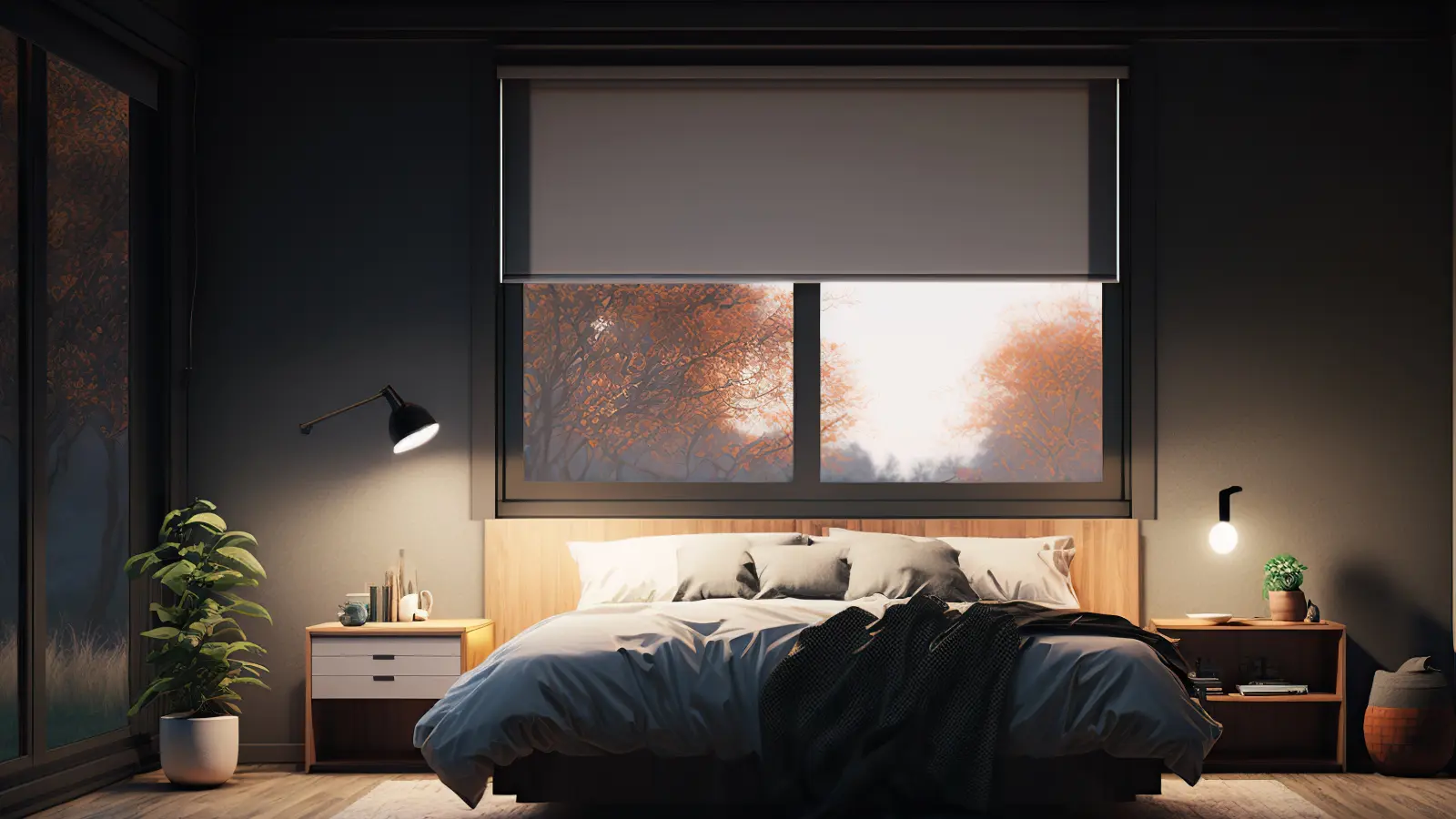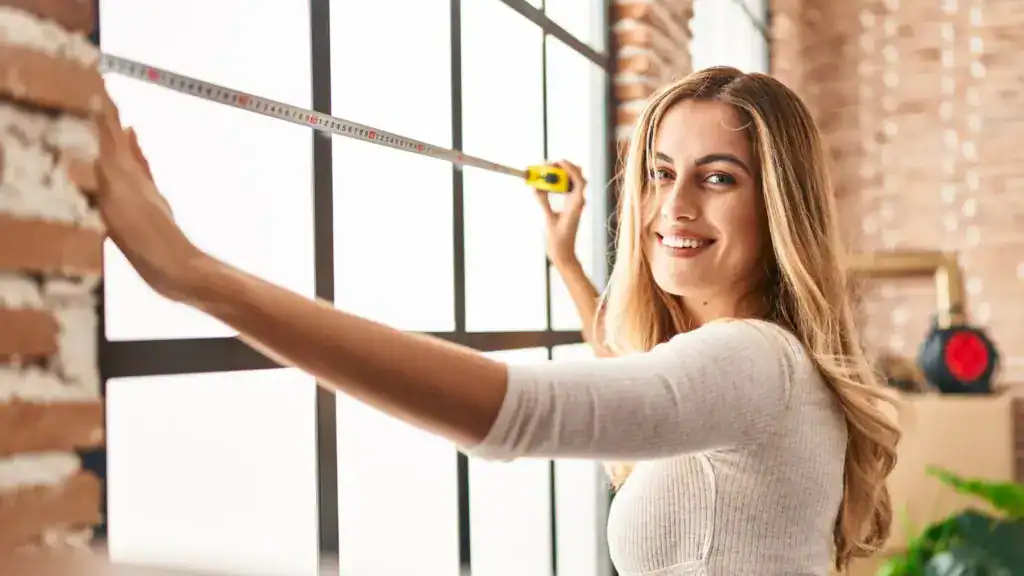Maximizing Light Control with Shades for a Bedroom

Between 30% and 40% of American adults experience insomnia symptoms at some point.
About 10% of adults have chronic insomnia, defined as difficulty sleeping at least three times per week for three months or longer.
- Older adults are more susceptible to insomnia. A 2019 review suggests that up to 75% of individuals aged 65 and older exhibit insomnia symptoms.
- Women are more likely than men to experience insomnia. In 2020, 17.1% of women reported trouble falling asleep most days, compared to 11.7% of men.
“But wait a minute,” you may think. “I thought we were talking about light control!”
We are. Poor light control is one of the main culprits for poor sleep. In the war against sleeplessness, you have to give yourself every advantage.
“But wait a minute,” you may protest. “I don’t want to live in a cave!”
My friend, you don’t have to. Thanks to the miracle of modern technology and imaginative minds, your bedroom window shades can control light and promote sleep as little or as much as you want.
Shades come in various styles, colors, and materials to complement any design aesthetic. And they offer superior light control.
Best Window Shades for Light Control
Blackout Shades
- Completely block out sunlight.
- Ideal for those night workers or people who prefer a pitch-dark sleeping environment.
- Many hotels use blackout shades to ensure their guests have restful sleep.
Room-Darkening Shades
- Block out most light, but allow some natural light to filter in.
- Ideal for bedrooms where you want some natural light during the day while minimizing light at night.
Light-Filtering Shades
- Diffuse light while maintaining privacy.
- Soften harsh sunlight and create a gentle, ambient glow.
- Perfect for those who enjoy natural light without compromising privacy or sleep quality.
Roman Shades
- Offer a more elegant and decorative option for light control.
- Available in various opacities, from sheer to blackout.
- Can be paired with a blackout liner for ultimate light control.
Dual Shades (Silhouette Shades)
- Also known as “day and night” or “zebra” shades.
- Two layers of fabric with alternating stripes of sheer and opaque material.
- Allow for complete control over light, privacy, and view.
Top-Down Bottom-Up Shades
- Can be raised from the bottom or lowered from the top, allowing you to control which part of the window is covered.
- Best for bedrooms where you want to let in natural light from the top while maintaining privacy at the bottom.
Other Considerations for Light Control Shades
Motorization
Do you hate getting out of bed to adjust your window shades? Is the bedroom too cold? Most shades can be motorized for easy remote-control operation.
You integrate them into a smart home system, set them to lower and open according to a schedule, or even link them to light sensors for fully automatic control.
Plus, motorization eliminates cords that could pose a strangulation risk for children and pets.
Energy Efficiency
Cellular shades trap air in their honeycomb structure, acting as a thermal barrier. Roman shades with heavy fabric offer insulation similar to curtains and drapes.
Shades can reduce heat gain during hot summers and help retain heat in the winter, reducing energy bills.
Noise Reduction
Consider shades with noise-reducing properties if you live on a busy street or have loud neighbors. Cellular or double-cell honeycomb shades with blackout liners can absorb sound and create a quieter bedroom environment.
Additional Tips for Light Control
- Layer your shades with curtains or drapes for added insulation and light filtering.
- Be mindful of your shades’ material and color — darker colors absorb more light, while lighter colors reflect it.
- Install shades outside-mounted instead of inside-mounted to minimize gaps where light can seep through.
- Install light-blocking strips along the sides of windows where traditional shades might not fully cover.
- Custom-fit shades to your exact window dimensions for maximum light control.
FAQs: Light Control with Shades for a Bedroom
Q: How do I measure my windows for shades?
Measure the width and height of your window frame. Double-check your measurements to ensure a perfect fit.
Q: Can I use different types of shades together in one bedroom?
Yes. For instance, pairing blackout shades with light-filtering shades lets you control light levels depending on the time of day and your needs.
Q: What are the most durable materials for window shades?
Materials like polyester and PVC-coated fabrics are known for their durability. They resist fading and damage from sunlight, making them suitable for areas receiving direct sunlight.
Q: Can window shades help with temperature regulation?
Absolutely. Certain shades, like cellular shades, provide insulation by trapping air in their honeycomb structure, which helps maintain comfortable indoor temperatures and can reduce heating and cooling costs.
Q: Are shade colors important for light control?
Yes, the color of your shades impacts light control. Lighter colors reflect more sunlight, reducing heat gain, while darker colors absorb light, creating a darker environment and enhancing privacy.
Q: How do I know if motorized shades are compatible with my home automation system?
Consult the manufacturer’s specifications or a professional installer to determine compatibility with your existing home automation system. Many shades integrate seamlessly with popular smart home platforms.
Q: Can I install window shades or hire a professional?
Installing window shades can be a DIY project if you’re comfortable using basic tools and following instructions. However, hiring a professional ensures perfect fitting and alignment, especially for custom or complex installations. Professionals can also offer expert advice on the best shades for your design preferences and light control needs.


